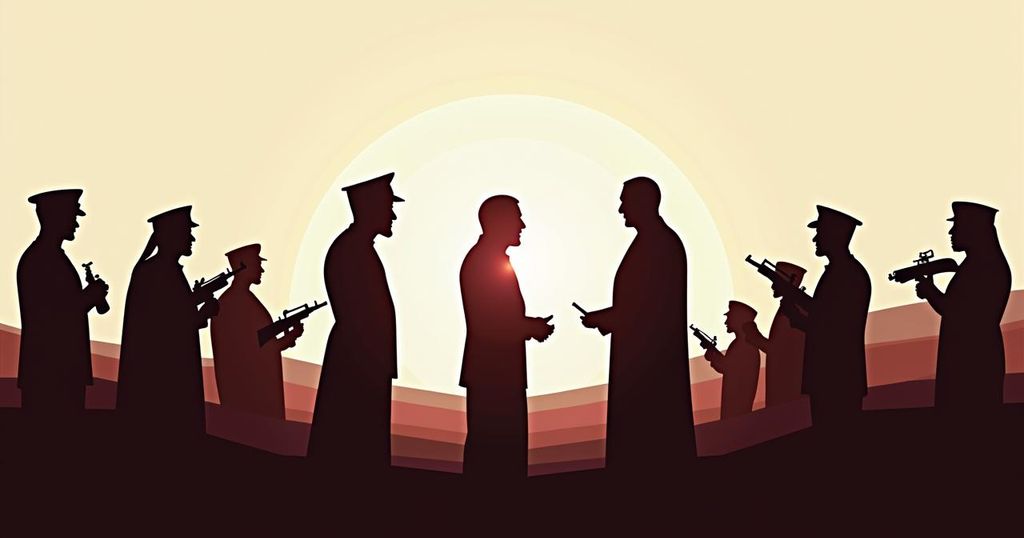Iran’s President Masoud Pezeshkian Visits Qatar Amid Growing Regional Tensions

Iran’s President Masoud Pezeshkian’s forthcoming visit to Qatar aims to bolster diplomatic ties while participating in the Asian Cooperation Dialogue amid heightened tensions with Israel. Simultaneously, Iran is engaging in joint military training with Oman, reflecting strategic military collaborations in the region.
On Wednesday, Iranian President Masoud Pezeshkian is set to visit Qatar, as reported by Iranian state media. His visit follows a recent attendance at the UN General Assembly in New York and a meeting with Russia’s Prime Minister, reflecting Pezeshkian’s commitment to enhancing Iran’s international engagements even amidst ongoing conflict involving Iranian proxies in the region, particularly against Israel. During the two-day visit to Doha, the president will meet with the Emir of Qatar, Sheikh Tamim bin Hamad bin Khalifa Al Thani, and participate in the 19th Asian Cooperation Dialogue (ACD) Summit. This trip is at the Emir’s official invitation and will also involve discussions among high-ranking Iranian and Qatari delegations, including a signing ceremony for cooperation agreements. Qatar’s role in the region is significant, especially as the host of Hamas leaders and its growing antagonism towards Israel, having criticized the country at the United Nations for its actions against Lebanon’s Hezbollah and the broader Palestinian issue. The United States and Western nations have looked to Qatar to facilitate a potential ceasefire between Hamas and Israel; however, the prospects for such a deal appear increasingly bleak, marking a shift in Doha’s diplomatic posture towards the negative. Pezeshkian’s participation in the ACD, initiated in June 2002, aims to foster a comprehensive Asian community without creating opposing blocs. Alongside this initiative, Iran is further integrating into economic coalitions such as BRICS and the Shanghai Cooperation Organization (SCO), thereby strengthening its ties with nations like China and Russia. Concurrent with these developments, Iranian state media revealed that Iran’s ground forces commenced joint military training with the Sultanate of Oman this week, denoting a significant development in Iran-Oman relations. This exercise, termed Mountain Falcons 1 (Saqour al-Jabal 1), facilitates experience sharing and joint combat training aimed at enhancing military readiness, involving not only the Iranian Ground Forces but also those of Oman and support from the Royal Omani Air Force and Police. Iran has cultivated a close relationship with Oman, a nation regarded for its neutral stance in regional conflicts. Moreover, Oman’s strategic geographical positioning and its tradition of stable relations with neighboring countries, including Iran, underscore its importance. This joint military training may raise concerns among international observers, yet it is essential to note that Iranian ground forces differ from the Islamic Revolutionary Guard Corps, often perceived as less ideologically driven. This collaboration could be interpreted as part of Iran’s broader influence strategy within the Gulf region, asserting its security interests while attempting to maintain stabilizing relations in Oman.
The geopolitical landscape in the Middle East has seen shifting alliances and increasing tensions, particularly between Iran and Israel. Iran’s diplomatic endeavors are aimed at fortifying relationships with neighboring countries amid its ongoing proxy conflicts. Qatar, a regional player hosting Hamas leaders, has exhibited a growing hostility towards Israel, and this has implications for broader regional dynamics. Moreover, Iran’s expanding military collaborations, exemplified by joint exercises with Oman, reflect its strategy to enhance military engagement and bolster its influence within the Gulf region.
In conclusion, the visit of Iranian President Masoud Pezeshkian to Qatar is indicative of Iran’s active pursuit of diplomatic relations in a context marked by regional tensions, particularly with Israel. The engagement with Oman through military training further illustrates Iran’s desire to solidify its military presence and cooperation in the region. These developments highlight the intricate interplay of diplomacy and military strategy as Iran navigates its position amidst shifting alliances and ongoing conflicts.
Original Source: www.jpost.com








